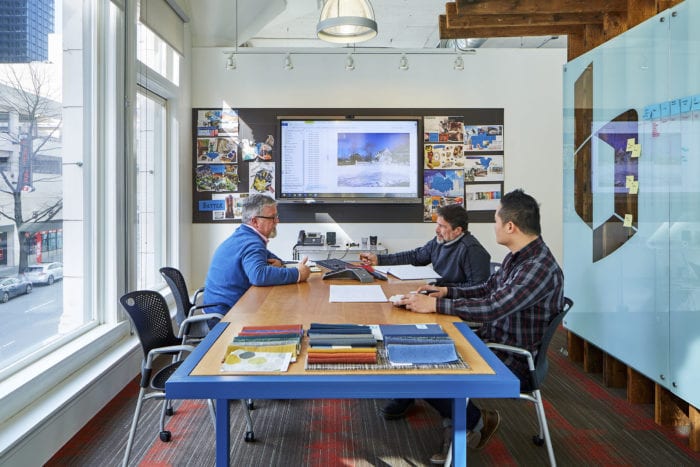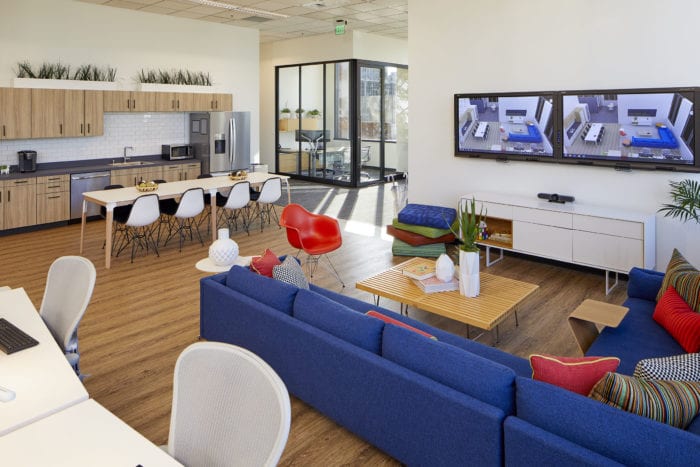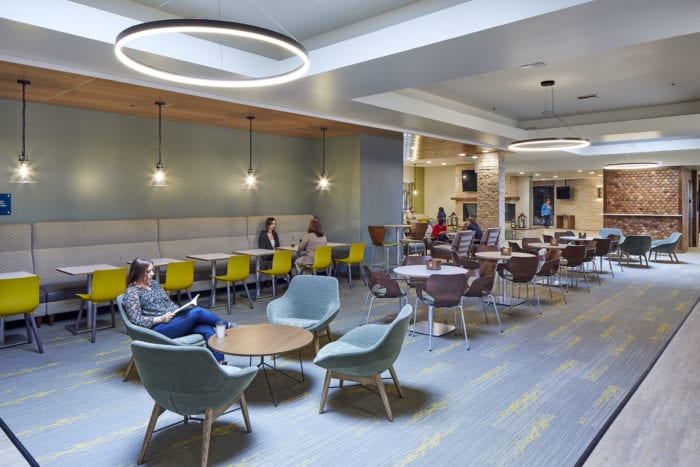It used to be that everyone agreed, more or less, on what “working space” meant.
Not anymore.
In today’s climate, the very idea of what physical working space is — and can be — in flux. As interior designers and architects, we are working with our clients to navigate the changing landscape. From reopening offices and schools to optimizing healthcare facilities and apartment buildings, we are assessing immediate and long-term concerns to answer the questions: what has changed? What can get better?

The shift to remote work has shown us some working conditions that could improve, as well as some we’d like to keep. You and your employees are discovering all of the ways that they can work from home, but you are also discovering what people miss about the workplace. If the future of work means that people work from home and use the office to collaborate, this is a great time to explore how your space can best serve your company’s style of collaboration.
Think about your space and how it needs to be configured to provide a safe place where people can connect and collaborate more effectively and creatively. BCRA staff has made good use of digital tools to uninterrupted service for our clients — but we actually like spending time together and are eager to reconvene over activities that can’t really be duplicated in virtual space. Our future workspace needs to respond to those needs to keep engagement high and feed our creative and innovative spirits.

Every business wants a work space that reflects its brand, attracts talent and clients, accommodates growth, and respects budgets. But one size never fits all. So we use workplace surveys to get a sense of our clients’ specific needs, collecting data and synthesizing ideas to return to the table with confident recommendations for “the new normal.” Some of what we’re discussing with clients includes:

Biggest takeaway:
Think of your office as an opportunity for in-person collaboration: create spaces that people can’t duplicate at home. We have discovered that we don’t need a physical office to perform individual tasks, but most of us are looking forward to having gathering space outside of our homes for in-person interaction. Start your exploration by asking employees what they miss and then see which comments relate to your strategic goals. This will help you develop priorities for your reopen strategy.
